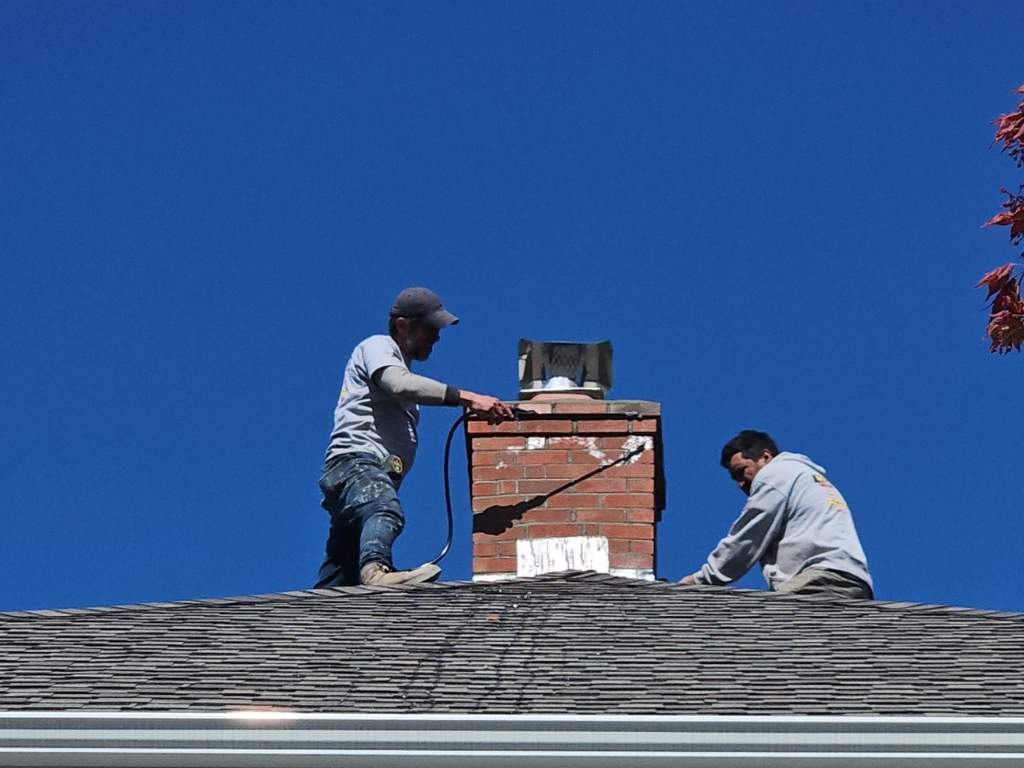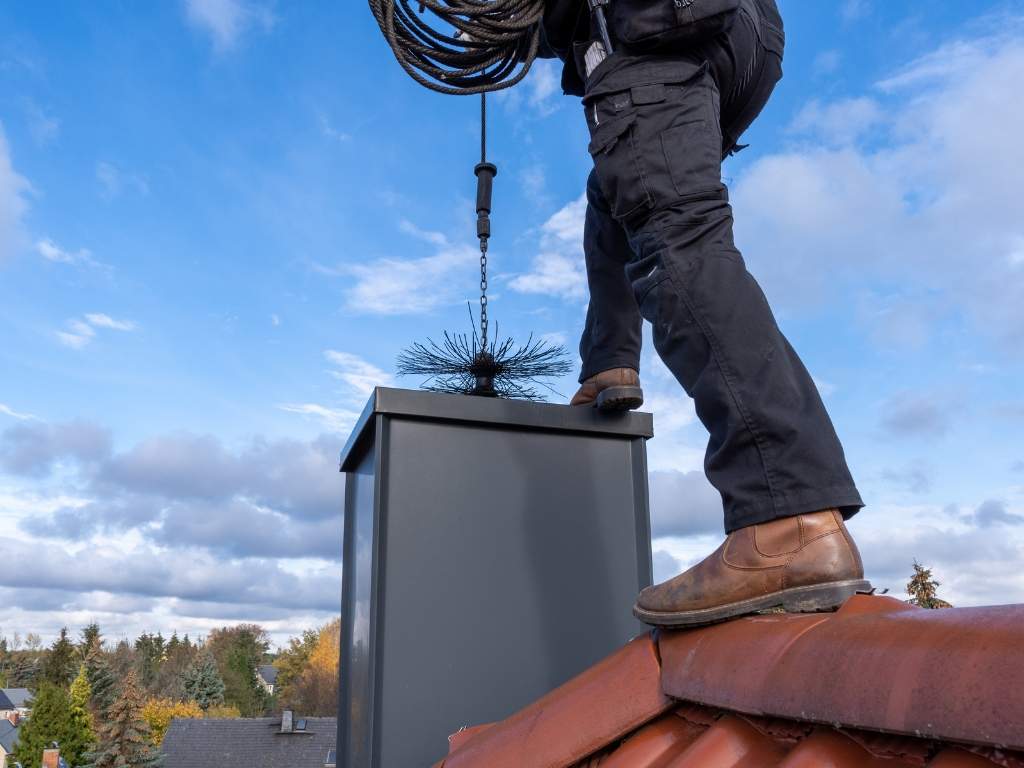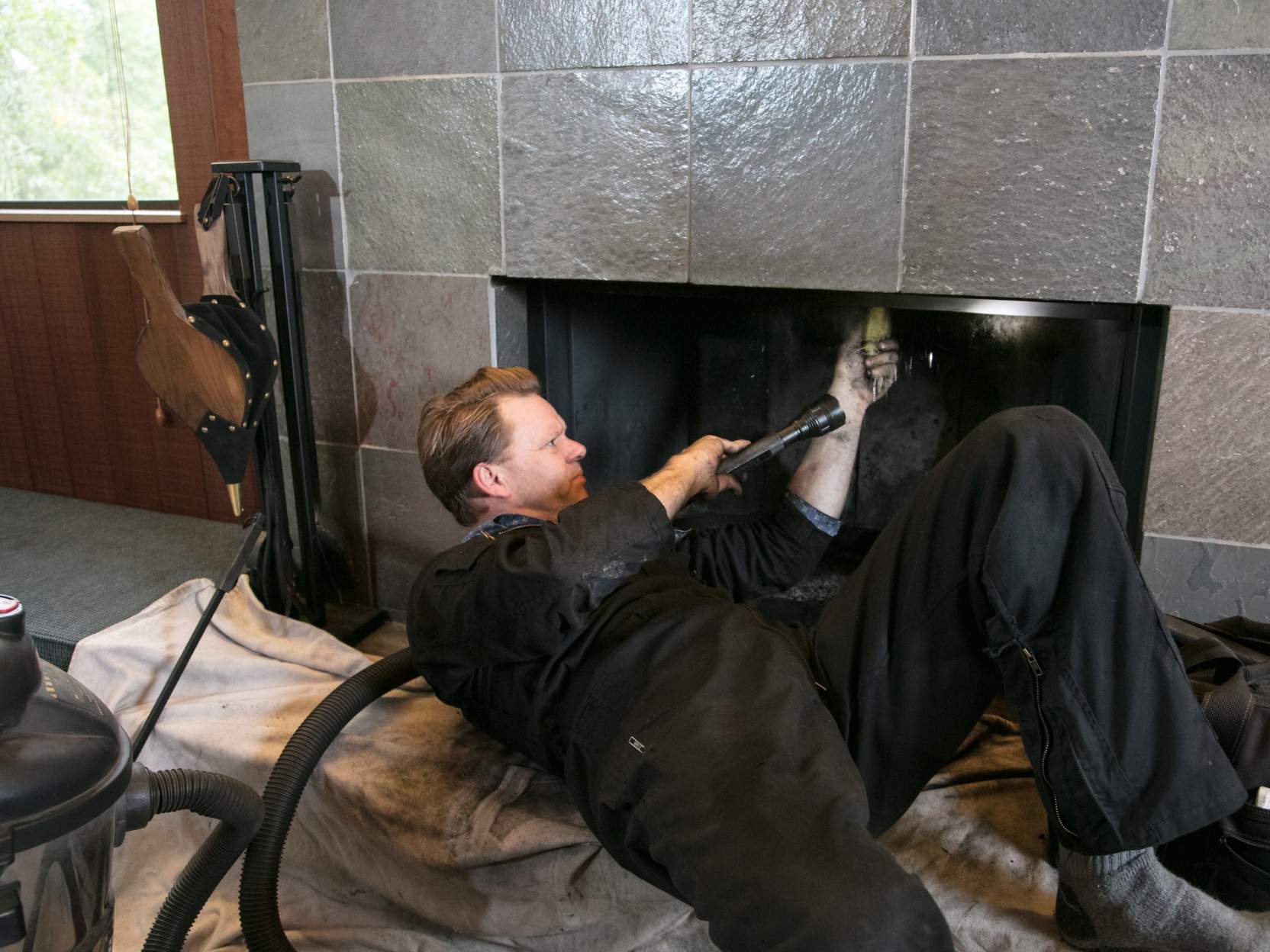When was the last time you had your chimney looked at? If you’re like most homeowners, it probably hasn’t been top of mind.
But here’s the thing—your chimney does a lot more than just vent smoke. It affects how well your fireplace works, how much heat you lose in winter, and whether you’re safe from fire risks.
This guide covers the basics of chimney maintenance, from annual inspections to cleaning tips and long-term care.
Why Chimney Maintenance Matters
Neglecting your chimney can lead to:
- Creosote buildup increases the risk of chimney fires.
- Poor ventilation causes smoke or carbon monoxide to enter your home.
- Cracked bricks or flue liners, which may lead to water damage or structural issues.
If your fireplace or heating appliance uses a chimney, routine maintenance isn’t optional. It’s essential.
How Often Should You Maintain Your Chimney?
The National Fire Protection Association recommends that chimneys be inspected at least once a year. Cleaning should happen as needed, typically:
- Once a year for wood-burning systems
- Every other year for gas or oil systems
- More frequently, if you use your fireplace daily in winter
Even if you barely use your fireplace, inspections can catch weather damage, animals nesting, or other problems.
Why You Need Expert Chimney Inspection
A chimney inspection catches early signs of damage, buildup, or blockages. It keeps your system working safely and efficiently.
There are three levels of chimney inspections:
- Level 1: Basic yearly checkup for systems with no changes or known issues
- Level 2: Required after a property sale, natural disaster, or changes to the heating system
- Level 3: In-depth inspection if there’s suspected structural damage. It may involve removing parts of the chimney or nearby walls.
Most homes only need a Level 1 inspection unless there’s been a recent incident or renovation.
What do professionals look for?
- Creosote or soot buildup
- Blocked or damaged flue
- Water leaks or rust
- Cracks in masonry or chimney liner
- Clearance issues near combustible materials
If they find problems, they’ll recommend next steps, usually a cleaning or repair.
Know When and How to Clean Your Chimney
Creosote is a flammable byproduct that clings to the inside of your flue. If it builds up too much, your risk of a chimney fire goes up.
Here are some signs your chimney needs cleaning:
- Black flakes or shiny residue in the firebox
- Smoke is backing up into your room
- Strong smoky smell even when not in use
- A technician flags your chimney as dirty during inspection
Can you clean it yourself?
You can handle surface cleaning—such as emptying the firebox—but chimney sweeping requires more than a broom. Professionals use special tools to reach inside the fuel and remove buildup safely.
Common Chimney Problems
Some chimney issues start small but lead to costly repairs if ignored. Here’s what to watch for:
- Cracked Crown: The cement top of your chimney can crack over time, letting water in.
- Missing or Broken Cap: This exposes your chimney to animals, debris, and moisture.
- Spalling Bricks: Bricks may crumble from freeze-thaw cycles or long-term water damage.
- Flue Liner Cracks: These are dangerous because they allow heat and gases to reach the framing.
- Rust or Stains: Often signs of internal leaks or trapped moisture.
Spot any of these? Avoid using the chimney until it’s been checked.
Smart Chimney Habits Between Visits
Daily habits can extend the life of your chimney and reduce creosote buildup. Make these part of your routine:
- Burn only seasoned hardwood. It burns cleaner and hotter.
- Don’t burn paper, trash, or softwoods. These create more smoke and residue.
- Use a chimney cap. It blocks moisture and nesting animals.
- Install a spark guard. Prevents embers from escaping.
- Close the damper when not in use. Helps with energy efficiency and moisture control.
After a heavy storm or snowfall, look up at your chimney. Are any bricks loose? Is the cap missing? A quick visual check can save you from expensive repairs.
Plan for Long-Term Chimney Maintenance
Keeping your chimney safe isn’t just about yearly checkups. Over time, parts wear down, weather takes a toll, and older systems need upgrades.
Here’s how to stay ahead of long-term issues:
- Track inspections and cleanings
Keep a simple record of when the service was done and what was found. This helps catch patterns and prevents duplicate issues. - Budget for occasional repairs
Flashing, crowns, caps, and liners don’t last forever. Expect to repair or replace parts every few years, especially in older homes or cold climates. - Consider relining after 20–30 years
Clay liners can crack over time. If your chimney is decades old or shows signs of wear, ask a technician about relining with stainless steel or another durable option. - Check compatibility during upgrades
Switching fuel types? Installing a new stove? Always check that your chimney setup meets current safety codes. - Apply waterproofing if needed
If you live in a wet or snowy area, ask about chimney waterproofing to reduce freeze-thaw damage and slow masonry wear.
Staying proactive with these steps saves money over time and makes sure your chimney stays reliable for the long haul.
How Neighborhood Chimney Services Can Help
If you’re unsure when your last inspection was—or don’t remember ever having one—now’s a good time to start. Keeping your chimney in good condition is one of the smartest ways to protect your home and your family.
Neighborhood Chimney Services offers:
- Certified chimney inspections
- Professional cleaning and creosote removal
- Masonry repairs and chimney cap replacement
- Waterproofing and flue relining
Final Thoughts
A chimney might seem simple, but it plays a major role in your home’s safety. With regular maintenance, it’ll work efficiently and last for decades.
Don’t wait for smoke, smell, or cold weather to act.
Schedule your chimney inspection with Neighborhood Chimney Services today and get peace of mind before your next fire.



